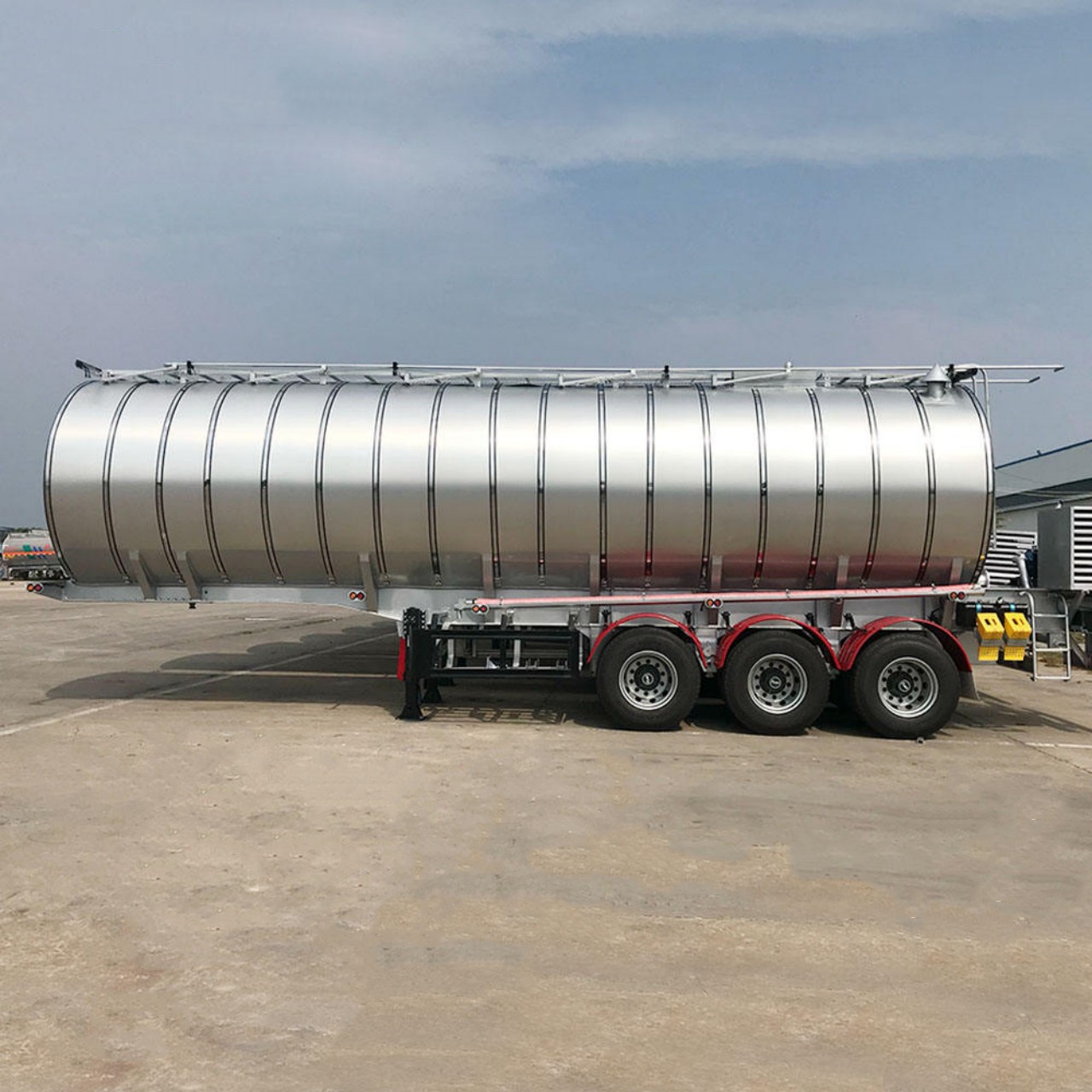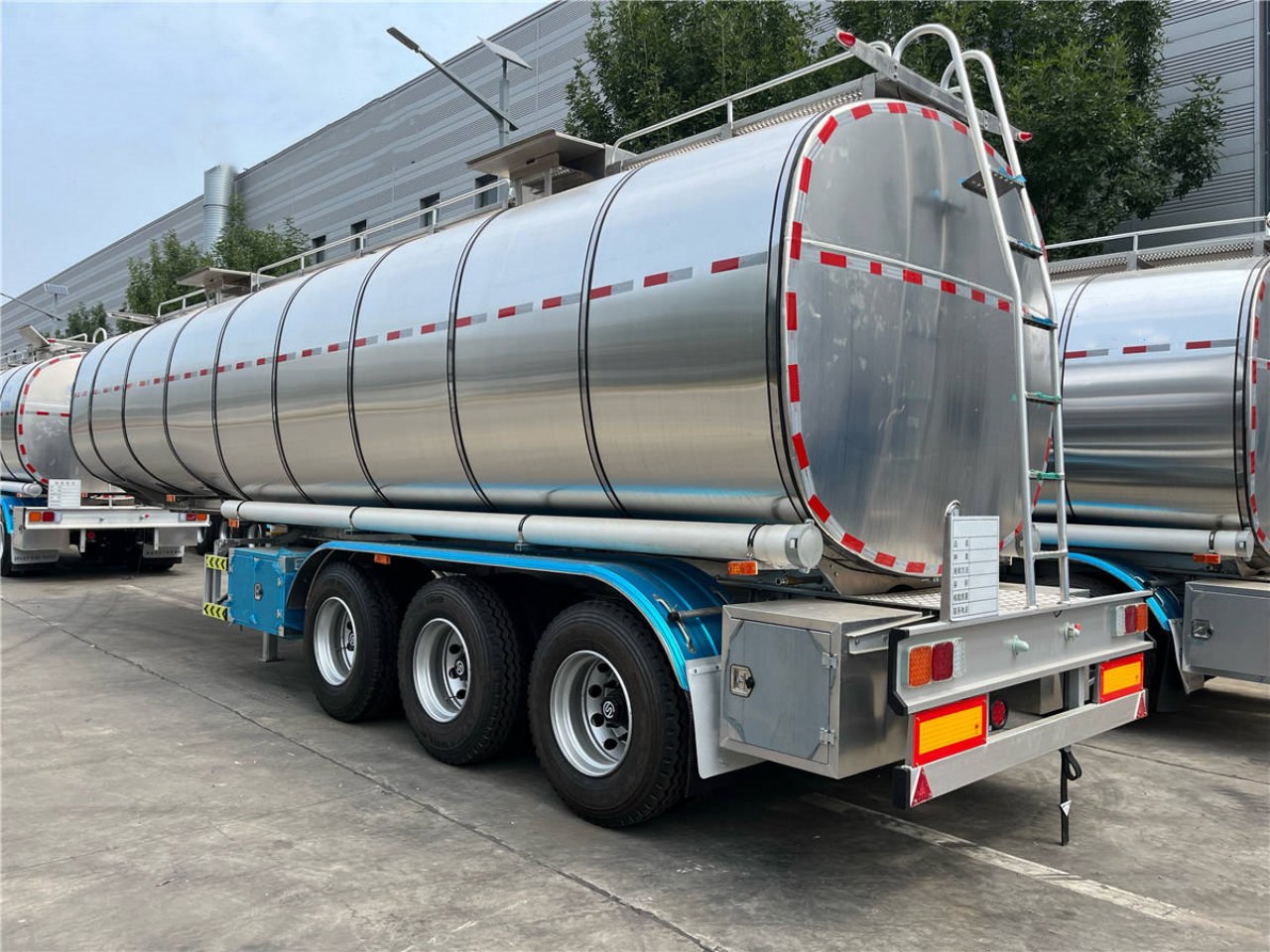Tanker trailers are a critical part of the logistics industry, transporting a variety of liquids, gases, and dry bulk materials across vast distances. From delivering fuel and chemicals to hauling food-grade products like milk and juice, these trailers are designed to handle specific cargo under stringent safety and performance standards. Among the most frequently asked questions about these massive vehicles is: How long is the average tanker trailer? The answer isn’t straightforward because tanker trailers come in several configurations based on their intended use. However, by exploring the different types and purposes of tanker trailers, we can arrive at a clear understanding of the average lengths across the industry.
1. General Overview of Tanker Trailers
A tanker trailer is a type of semi-trailer designed for transporting liquid or bulk materials. Unlike flatbeds or box trailers, tanker trailers have a cylindrical shape that is optimal for carrying liquids or fine dry materials. The materials used in construction often include stainless steel, aluminum, and carbon steel, depending on the cargo they are intended to carry.
These trailers are categorized based on what they haul:
- Liquid tankers (e.g., fuel, water, chemicals)
- Gas tankers (e.g., LPG, LNG)
- Dry bulk tankers (e.g., cement, flour, plastic pellets)
- Food-grade tankers (e.g., milk, edible oils)
Each of these has varying design constraints that influence their overall length, capacity, and axle configuration.
2. Average Length by Type of Tanker Trailer
Let’s take a closer look at the average lengths based on the most common types of tanker trailers.
a. Fuel Tanker Trailers
Fuel tankers are among the most common types on the road, used to deliver gasoline, diesel, and other petroleum products. These trailers must adhere to strict regulations for hazardous materials transport, which influences their design and size.
- Average Length: 42 to 48 feet (12.8 to 14.6 meters)
- Capacity: Typically 7,000 to 11,600 gallons (26,500 to 44,000 liters)
Fuel tankers are often divided into compartments to allow for the transportation of different fuel types simultaneously. The average length of about 42–45 feet is a balance between maximizing volume and ensuring maneuverability, particularly in urban settings.
b. Chemical and Corrosive Liquid Tankers
These trailers transport hazardous chemicals like acids, solvents, and industrial liquids. Because of the dangerous nature of their contents, chemical tankers require specialized materials and coatings to prevent corrosion and ensure containment.
- Average Length: 40 to 45 feet (12.1 to 13.7 meters)
- Capacity: Ranges from 5,000 to 8,000 gallons (18,900 to 30,300 liters)
These trailers are generally a bit shorter than fuel tankers due to weight density and safety considerations.
c. Food-Grade Tankers
Used for milk, juices, edible oils, and other perishable liquids, food-grade tankers are built with sanitary standards in mind, usually using stainless steel with smooth interiors for easy cleaning.
- Average Length: 43 to 48 feet (13.1 to 14.6 meters)
- Capacity: 6,000 to 8,000 gallons (22,700 to 30,300 liters)
Their length is similar to fuel tankers, but their internal design focuses on hygiene and insulation rather than compartmentalization.
d. Dry Bulk Tankers
These carry powdered or granular materials such as cement, flour, or plastic pellets. Because these materials are lighter per unit of volume, the trailer’s volume capacity can be quite large.
- Average Length: 40 to 45 feet (12.1 to 13.7 meters)
- Capacity: Around 1,000 to 1,500 cubic feet (28.3 to 42.5 cubic meters)
Dry bulk tankers tend to be somewhat shorter but bulkier in cross-section to accommodate large volumes.
e. LPG and LNG Tankers
These transport liquefied gases under pressure. Their construction must meet even stricter standards due to the volatile nature of the cargo.
- Average Length: 40 to 48 feet (12.1 to 14.6 meters)
- Capacity: Typically between 8,000 and 11,000 gallons (30,300 to 41,600 liters)
These trailers are among the heaviest-duty models and have reinforced shell designs.
3. Factors That Affect Tanker Trailer Length
Several factors influence how long a tanker trailer can or should be:
- Cargo Type: Heavier or hazardous cargo may require shorter trailers for better stability.
- Regulatory Limits: Federal and state laws dictate maximum lengths for trailers. In the U.S., the standard maximum for a semi-trailer is around 53 feet, although tankers rarely reach this maximum.
- Axle Configuration: More axles can spread weight better and allow for longer trailers.
- Operational Terrain: Rural and urban settings might require different turning radii, influencing the preferred trailer length.
- Transport Efficiency: Carriers must balance trailer capacity with ease of operation and maintenance.
4. Global Differences in Tanker Trailer Length
The average length of a tanker trailer can also vary depending on the country or region:
- United States and Canada: Tanker trailers typically range between 42 to 48 feet. In Canada, B-train tanker configurations (2 trailers in tandem) are also common, extending the overall length significantly.
- Europe: Tankers are often shorter (around 36 to 42 feet or 11 to 13 meters) due to stricter road size limitations and a preference for maneuverability on narrow roads.
- Australia: Known for “road trains,” Australian tanker trailers can be much longer, with multiple tankers linked together, sometimes reaching over 100 feet (30 meters) in total.
5. Conclusion: A Practical Average
When assessing all types of tanker trailers and their most common configurations, the practical average length of a single tanker trailer falls in the range of 43 to 45 feet (approximately 13.1 to 13.7 meters). This size offers an ideal balance of cargo capacity, road legality, and operational flexibility across most use cases and regions.
Understanding the average length of tanker trailers is essential not only for logistics planning but also for infrastructure design, fleet procurement, and driver training. As transportation technology evolves and regulations shift, tanker designs may change, but for now, the 43–45 foot mark remains the industry norm for most single-unit tanker trailers.




